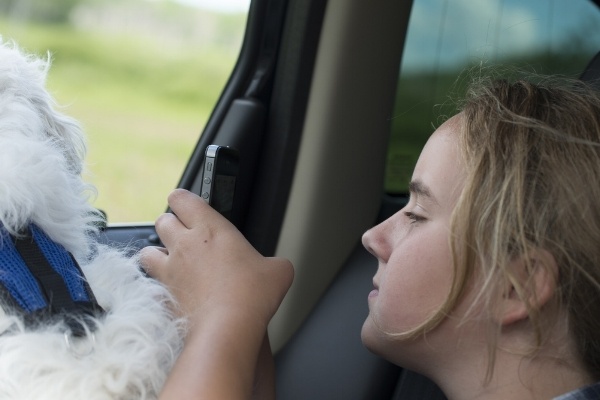Kids use their parent's smartphones, not to call grandma, but to visit sites with adult content
Have you ever been on a long road trip with your children? Then you will agree: It’s great to have something to entertain them; to distract them from the boring drive. Today, smartphones and tablets are a great source to keeping kids occupied for long periods of time, not only on the road.

Avast found that four out of five parents share their mobile devices with their kids.
These findings are the result of a survey Avast conducted amongst 1,500 parents in celebration of today’s International Children’s Day. Children are very tech-savvy and technology can be a great teaching tool, if kids use it appropriately. However, our survey results show that kids don’t always choose the most kid-friendly apps and activities while using their parents’ devices.
Accessing adult content
11 to 15 year olds seem to be the most curious – and most at risk
Many kids do mischievous things once they get their hands on their parents’ devices, however our survey has shown that 11 to 15 year olds are most likely to use smartphones and tablets for risky activities.
It’s not surprising that anything inappropriate is interesting to kids; 32% of parents admitted that their child has accessed adult content using their mobile device. More than half of these kids were between the ages of 11 and 15 years old.
The risk here is not only the child getting in contact with adult content, but the whole device and other family members are at risk as well: Mobile sites and ads including adult content often lead to phishing sites or sites including malware that is downloaded with the tap of a finger.
Doing things without parental permission
Sending messages in their parents’ name, behind their parents’ backs also seems to be a fun thing for kids to do, with 19% of parents claiming their child has hit the send button. Again, the sneakiest age group is 11 to 15 years old, 45% of messages were sent by them. If children send text or social media messages in their parents’ name, this can lead to embarrassing situations – or cause real damage, e.g. if a child sends an email from their parents’ business email address.
In addition to this, 7% of kids accessed apps that contained banking or credit card information and 6% used their parents’ device to make purchases without their parents’ knowledge. Once again the age group 11 to 15 years was the one caught red-handed the most - 44% of the 7% of kids that accessed apps containing banking and credit card information and 52% of the 6% of kids that made purchases were 11 to 15 years old.
Many children and teenagers have their own devices
Avast asked the 20% of parents who don’t share their devices with their kids, why they choose not to do so. Of these, 38% said their kids have their own devices, 40% think their kids are too young (between the ages of 0 to 10 years old), and 22% don’t trust their kids.
Out of the 22% that said they don’t trust their kids with their devices, 11 to 15 years old was the most mistrusted age group. Despite this, of the 38% parents that said their kids have their own devices, 48% are between the ages of 11 and 15. Based on what parents caught their 11 to 15 years doing with their mobile devices, can you imagine what these kids may be doing if they have their own device?
Safety tips for kids using mobile devices
Be aware of the sites your children are visiting
The Internet contains everything from cute cats to adult films - do you know which your kids are accessing? Talk to your kids, let them know that not everything online is necessarily safe and keep an eye on what they’re doing online. Also, often apps and ads with adult content can link to malicious sites– so make sure your device is safe.
Lock apps that can make purchases
Any apps containing banking information or that have credit card information saved to make purchases should be password protected, whether your child has their own mobile device or borrows yours. App stores such as Google Play and iTunes make it easy to purchase apps, all you have to do is type in your account password. Even if you don’t think your child knows the password, make sure you add a second layer of protection by password-locking certain apps.
Talk to them about messaging apps
In one of our recent blog posts we discussed the importance of talking to your kids about cybersecurity, especially when it comes to messaging apps and social media. Whether they are borrowing your phone or using their own device, talk to your kids about what information they should share, who they should talk to online and how they should be talking to others.
Talk to them about the value of money
Kids may not realize that the things they order or download online cost actual money. The fact that they can’t visualize online transactions makes it seem like the things they are ordering online must be free! Come up with an agreement, either allow your kids to make purchases online if they consult with you first, or if in the instances of apps, they are free. You could even give your kids app store gift cards as their allowance.
